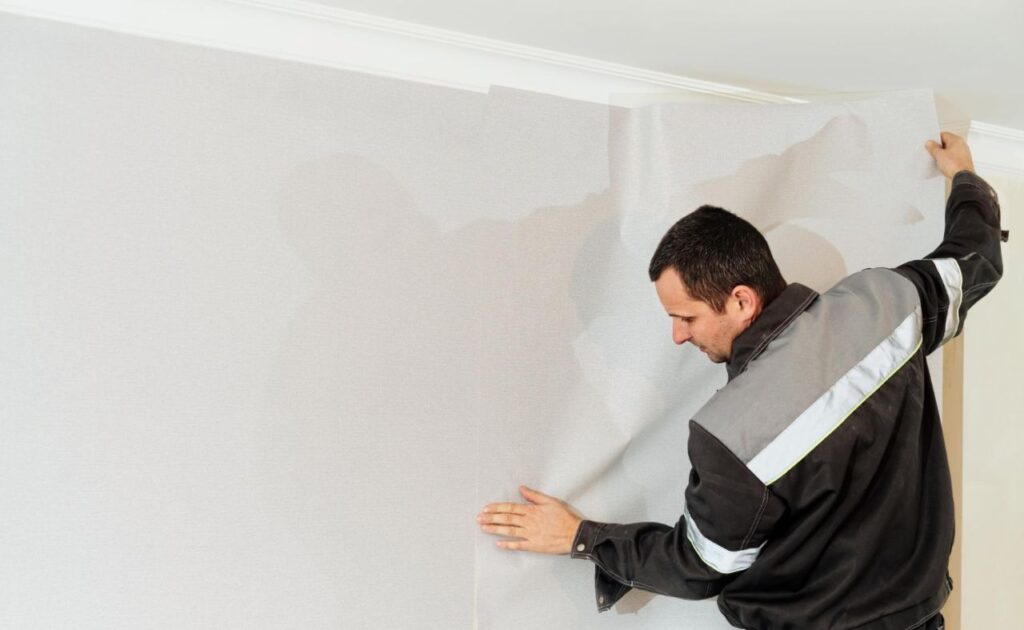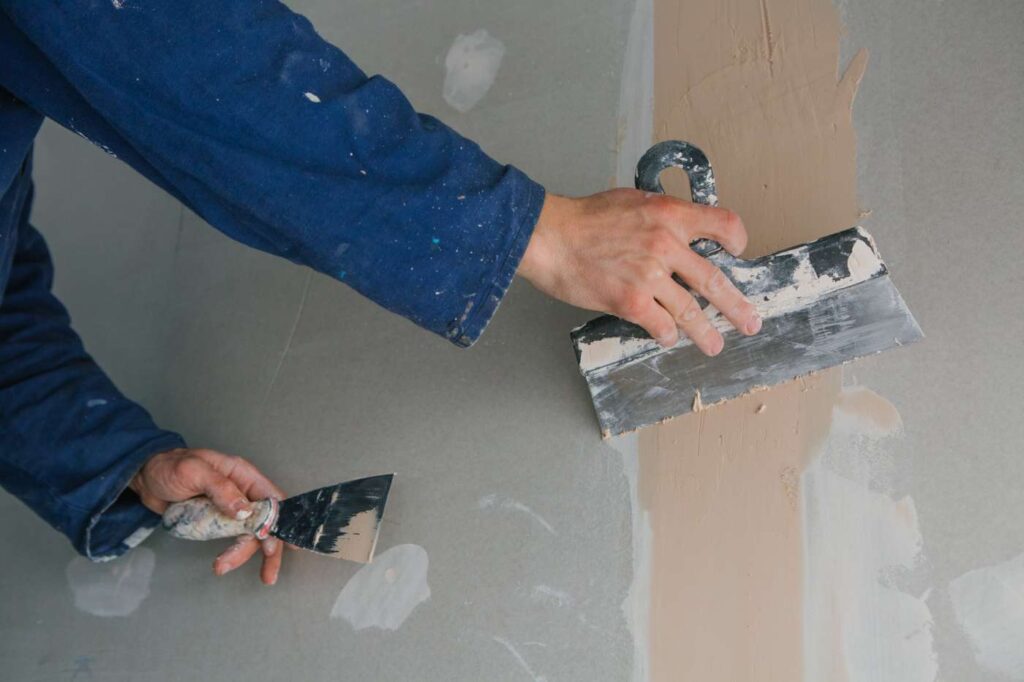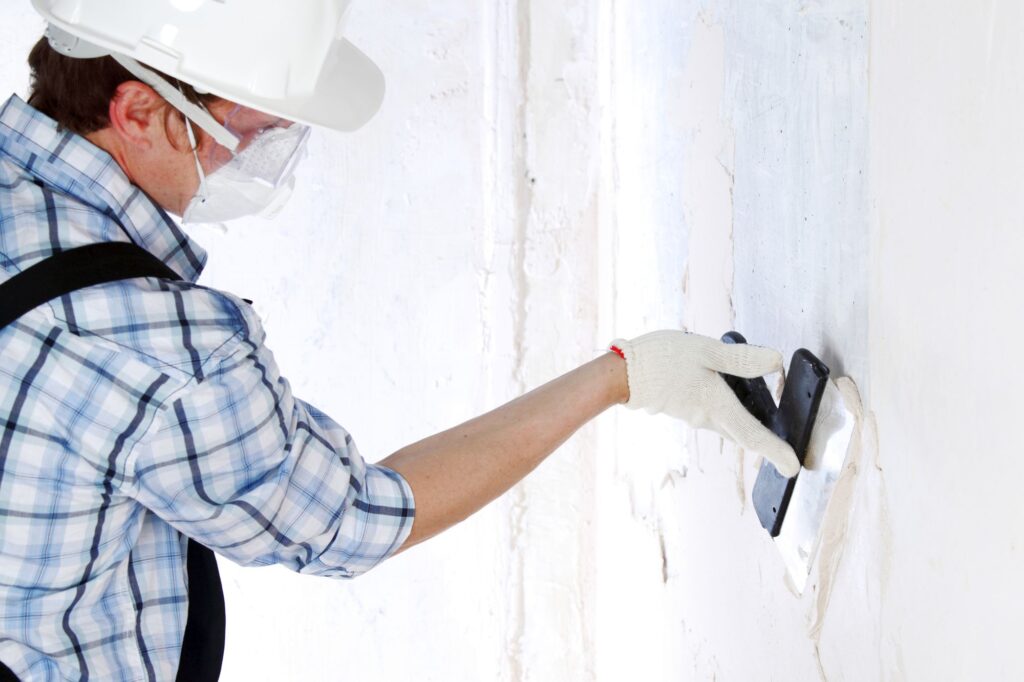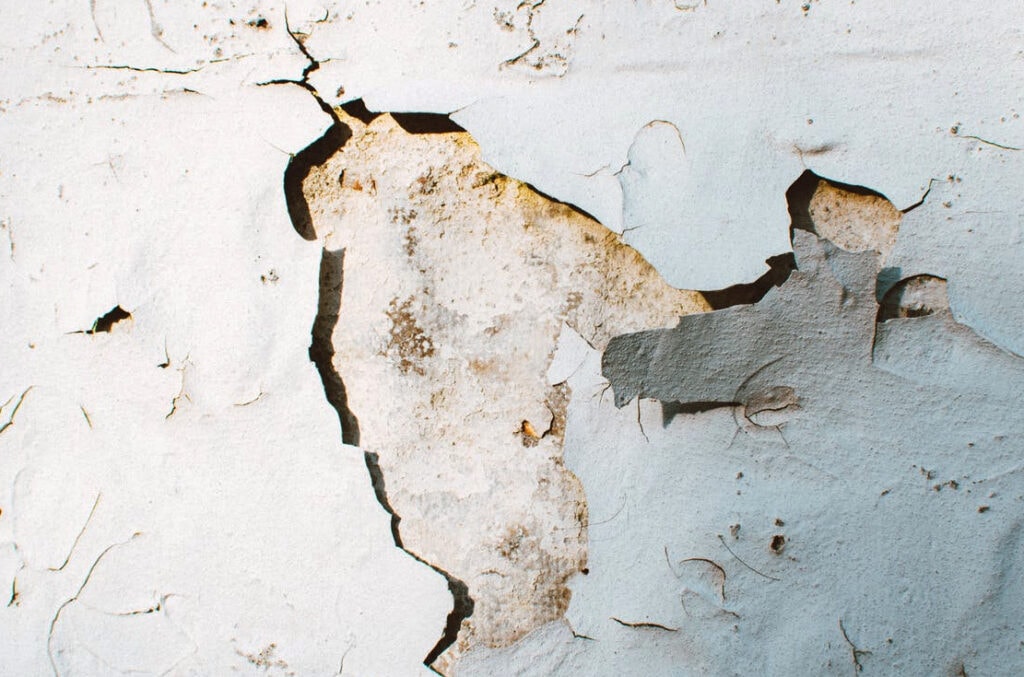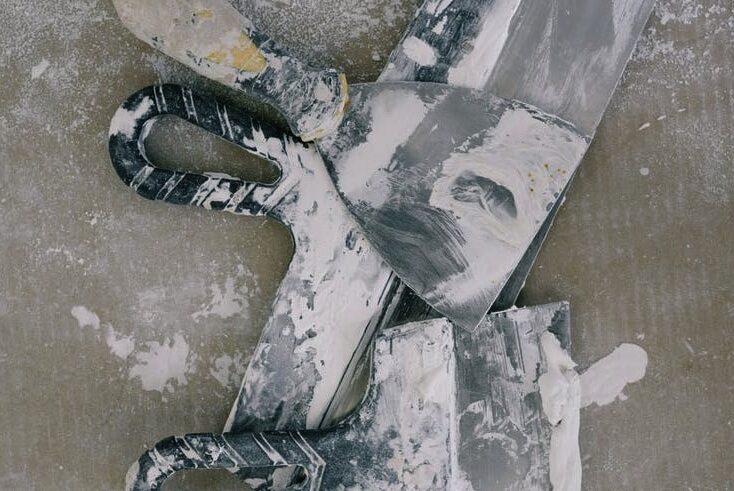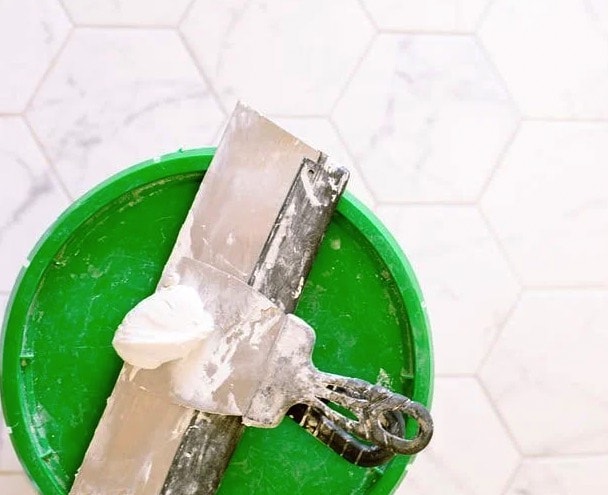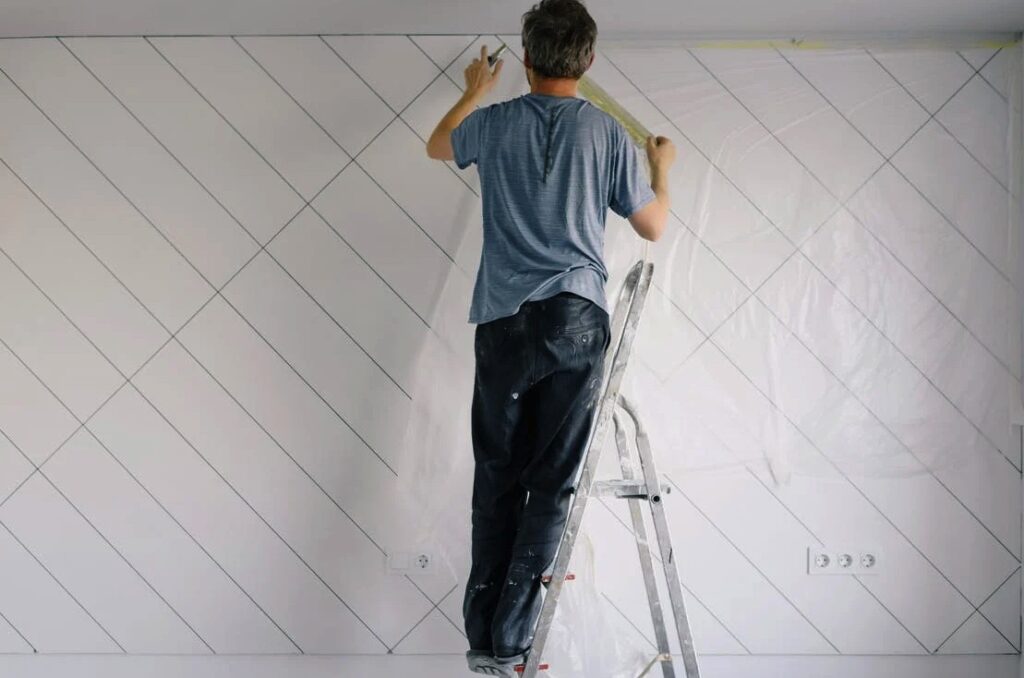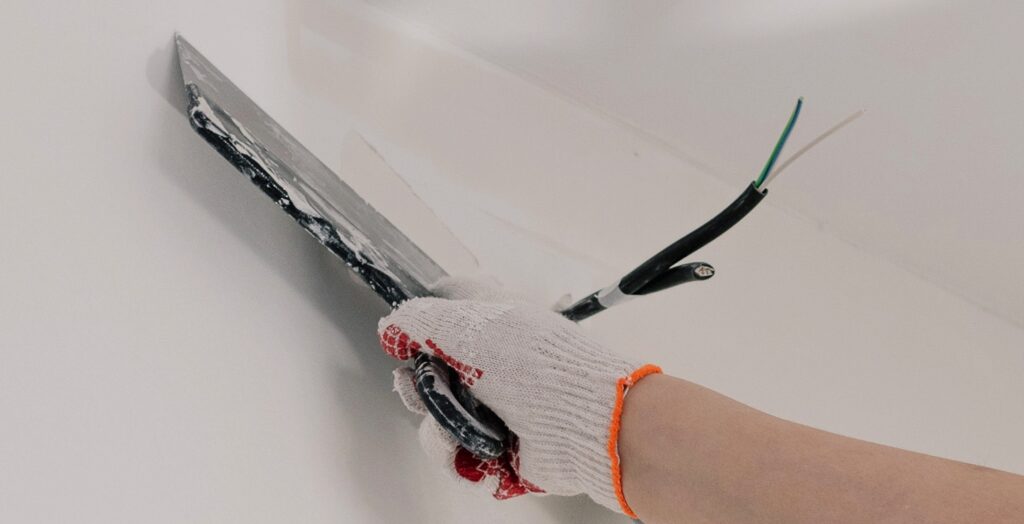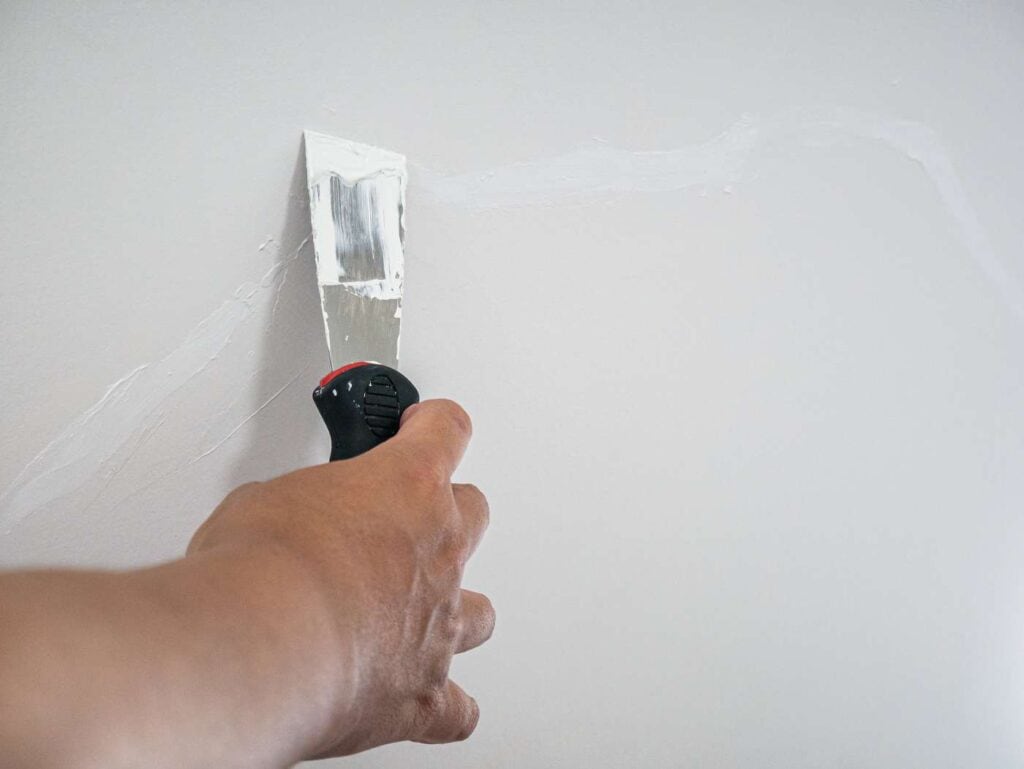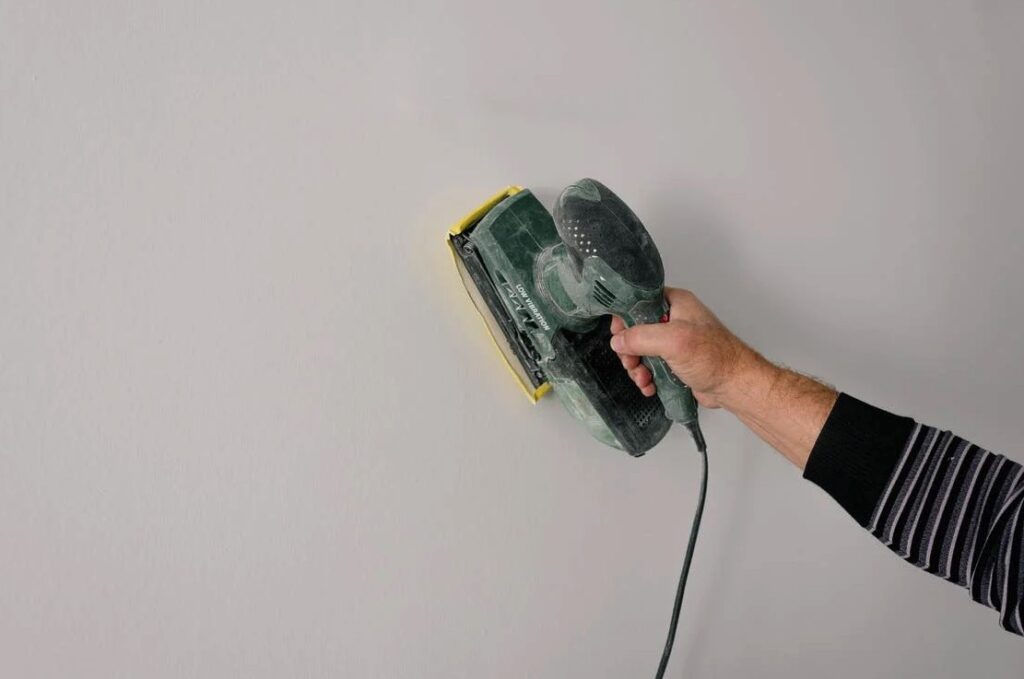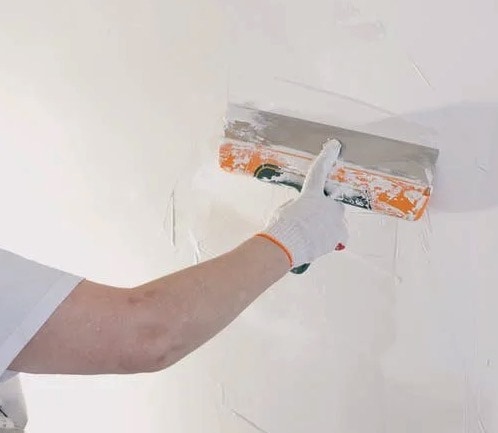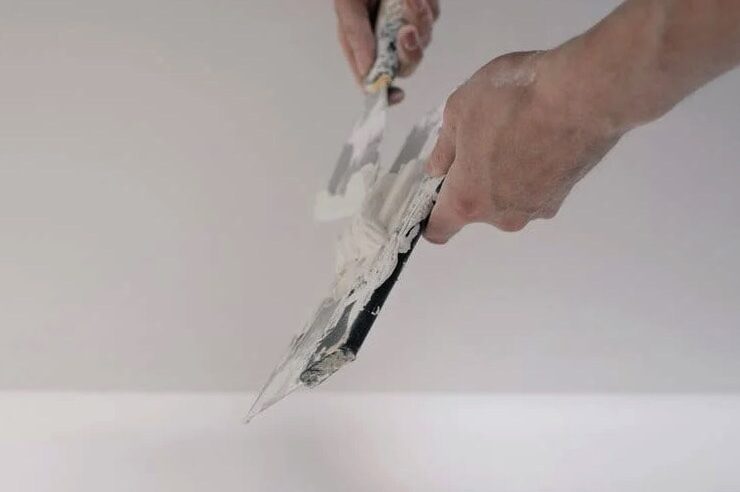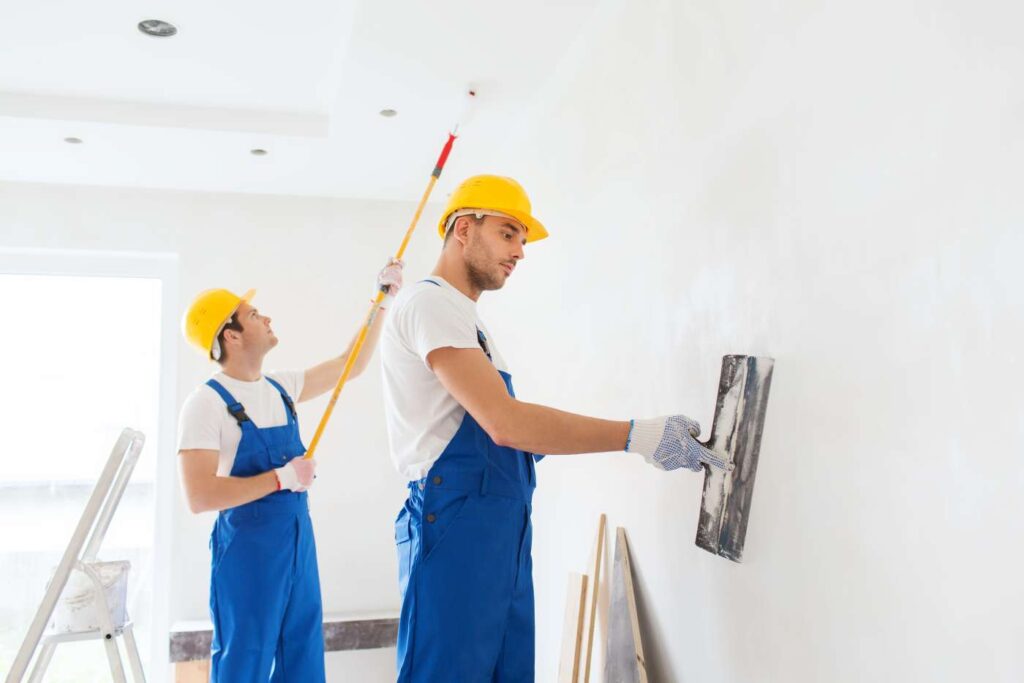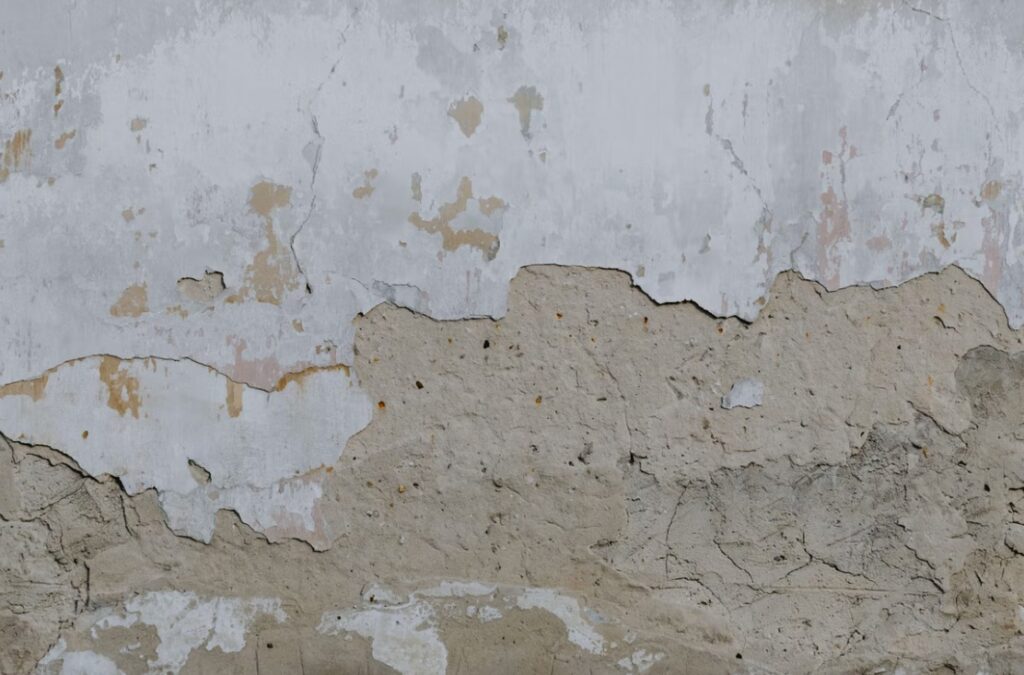The use of gypsum plasters in India has completely altered the building business there. In recent years, they've gained popularity and now make up a significant portion of India's major construction material. Gypsum plasters are the go-to for multi-story structures including apartments, villas, townhomes, and commercial high-rises. Kanish Plasters has been serving the gypsum plastering industry for over ten years.
This article presents our reasoning for why gypsum plasters are superior to cement plasters in apartment complexes and other high-rise constructions.
What is a Gypsum Plaster?
Plaster of Paris is a form of gypsum plaster. Gypsum is a soft mineral that is found in sedimentary rocks. Gypsum plaster has been used as a construction material for thousands of years, and it continues to be a popular option due to its adaptability, durability, and low maintenance.
Plaster formed from gypsum is produced by drying out the rock by heating it to extremely high temperatures. When combined with water, the powder becomes a paste that may be applied to any surface, including walls, ceilings, and floors. After the paste dries, it becomes a solid that can be further embellished with paint.
Gypsum plaster can be applied to a number of different materials, including brick, concrete, and wood, and it is quite simple to work with. In addition to being resistant to fire and water, it is also a popular option in high-risk flood and fire zones.
Furthermore, gypsum plaster is a green construction material because it is non-toxic and does not give out any dangerous gases or fumes. Because it lacks potentially irritating additives, it is also a suitable option for anyone with chemical sensitivities or allergies.
Gypsum plaster has many applications, such as a wall or ceiling finish, in the creation of decorative mouldings and trim, and in the creation of ornamental motifs. It's versatile enough to be applied in a wide range of finishes, from sleek and polished to rugged and textured.
Gypsum plaster also has the added benefit of being simple to fix in the event of damage or cracks. Gypsum plaster can easily be repaired by patching or filling in with new plaster, but other forms of plaster may need to be completely replaced.
Nonetheless, gypsum plaster does have a few drawbacks that should be considered. One issue is that, compared to other forms of plaster, it can be somewhat pricey. However, gypsum plaster isn't as sturdy as materials like cement or concrete, so it might not work for every building job.
Plaster made from gypsum is used in construction all over the world and has been for millennia because of its versatility and resilience. It's a common material for contemporary construction because of its versatility, durability, and resistance to fire, water, and heat.
Why Use Gypsum Plasters?
Construction Costs Are Lower
The use of gypsum plasters helps keep building costs down. Our analysis and other studies show that using gypsum plasters can cut building costs by roughly 20%. Because of the larger surface area of plastering in high-rise buildings, this is likely to be more of an issue there.
Given the recent over 20% increase in the cost of construction in India, this is also a significant consideration for construction firms and builders. Gypsum plasters are a vital factor at a time when builders are seeking ways to cut expenses.
Thus, if you're a contractor working on apartment complexes or other high-rises who's having trouble keeping up with the escalating prices of construction, gypsum plasters are something you should definitely look into. Many businesses have made the switch to gypsum plasters and are now offering competitive pricing, so you may be missing out on business if you don't give it a try.
Since apartments and other high-rise structures are frequently rented out by tenants for either residential or commercial usage, it is conceivable to offer competitive prices by switching to less expensive construction materials. Sometimes this happens after the development and construction of a building, when the space is sold off.
You wouldn't only be able to make it through this, but rather, you'd flourish. This is because you will be able to increase your market share while maintaining larger profits than your rivals.
Gypsum plaster reduces the weight of plastering by 35%
While designing and constructing tall buildings and condominiums, civil engineers and architects have one overarching goal in mind: minimise the structure's weight. This is especially crucial in tall buildings, where extra weight reduces their resilience to natural disasters like hurricanes and earthquakes. Plasters can be made lighter since gypsum has a low density and a strong compressive strength. Thus, gypsum plasters are prefered over cement plasters by construction companies and builders when constructing high-rise structures and flats. This strengthens their defences against earthquakes and other natural disasters.
Gypsum plaster quickens the construction process
The use of gypsum plasters helps speed up the building process. Based on our findings, gypsum plaster can cut down on building time by as much as 75%.
This is due to the fact that, unlike cement plasters, gypsum plasters don't need water in order to cure.
Spraying and splashing water on cement plasters for fifteen to twenty-one days allows them to cure and develop their natural strength. On the other hand, gypsum plasters harden to the point where they can be painted in just four days.
Compare this to the cement plaster, and you'll see how insignificant it really is.
Think of the time savings that would result from using gypsum plasters to finish apartment buildings and other high-rise structures. Absolutely monumental, right?
Gypsum plasters result in a smooth finish
In either the home-selling or apartment-renting markets, kerb appeal and overall visual quality are crucial.
Gypsum plasters result in a flawless, crack-free surface. This is in contrast to the easily damaged and cracked cement plaster used for most walls.
Because of this, prior to painting, putty must be applied to cement-plastered walls.
Gypsum plastering, on the contrary, minimises the requirement for putty.
Walls plastered with gypsum leave a smooth surface that is ready for painting without the need for putty. Overall, gypsum plasters enhance the visual appeal and market value of commercial and residential buildings. More and more potential buyers or tenants will be drawn to your business as a result of this.
Fungi and algae cannot grow on gypsum-plastered walls
Gypsum is an all-natural antiseptic. Plasters made of gypsum are resistant to the growth of mould, mildew, and algae. Insects are likewise deterred from gypsum-plastered walls. This is especially crucial in large apartment complexes and other high-rise structures, which can be a pain to clean and maintain because of their height.
Gypsum-plastered walls are simple to clean and maintain
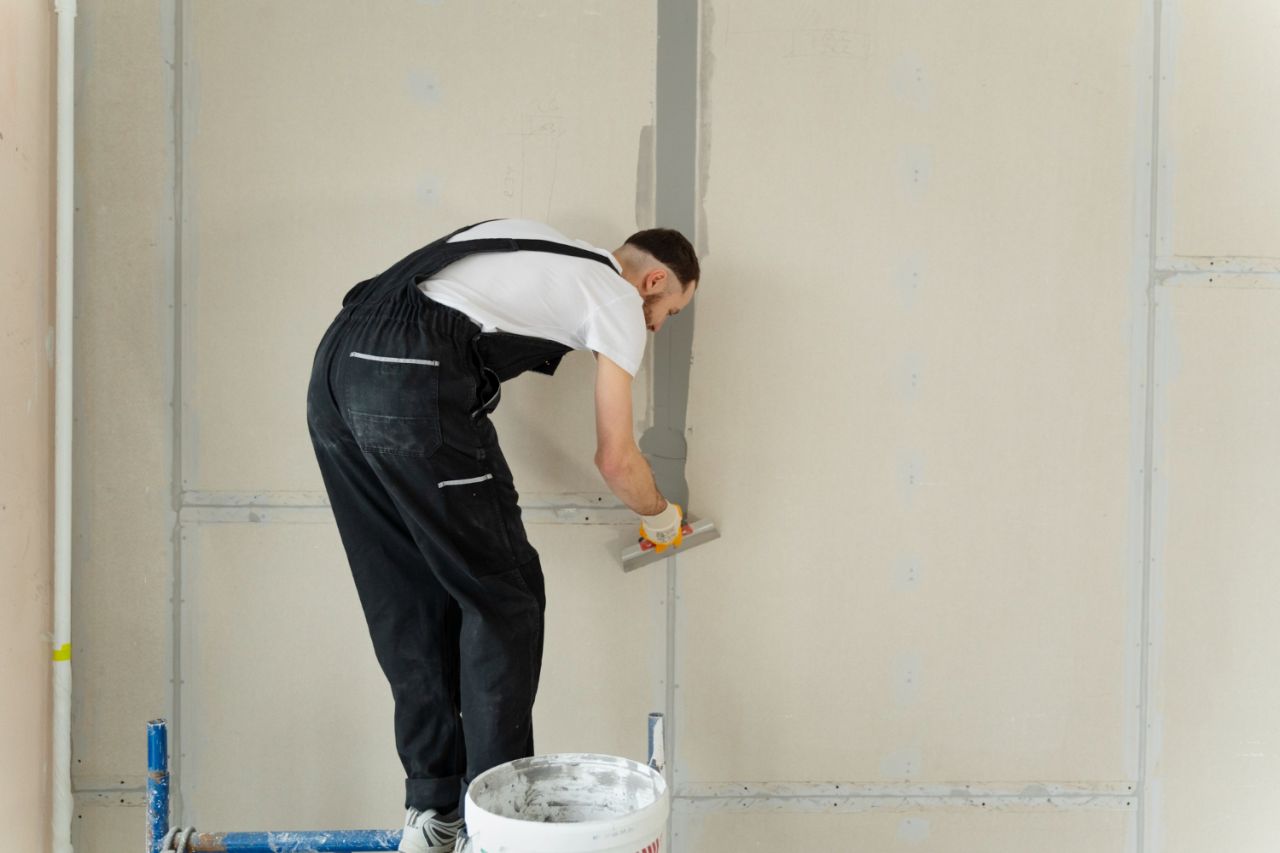
Spots and stains can be easily removed from gypsum-plastered walls. Cleaning cement plasters, in contrast, is a time-consuming and laborious process. It doesn't take a lot of time for people to clean a gypsum-plastered wall. Cleaning a wall that is made of gypsum plaster is as simple as wiping the spots away with a damp towel. When resources for cleaning and upkeep are limited, this is a crucial factor to think about.
Gypsum plastering reduces the amount of labour required.
When compared to cement plasters, gypsum plastering requires 40% less time to install.
Despite widespread resignation and labour shortages in the global industrial environment, construction projects can still be completed on time if builders switch to gypsum plasters.
The building industry is likewise struggling with high labour costs. Plastering with gypsum requires less time and effort from workers, which could help keep construction costs down. Because of this, construction projects can be completed for less money.
Gypsum and Cement Plaster
There are benefits and drawbacks to using either gypsum plaster or cement plaster in multi-family and high-rise dwellings.
Because of its portability and ease of use, gypsum plaster is frequently used in the construction of high-rise buildings even when site access is restricted. It dries quickly also, so it can help building progress along more swiftly.
As an added bonus, gypsum plaster is less likely to shrink and crack than cement plaster, which can help cut down on maintenance and repair costs over time. This can be especially useful in high-rise structures, where it might be challenging and expensive to do maintenance and repairs.
Cement plaster, on the other hand, is widely used because of its strength and longevity, making it an attractive option for the construction of skyscrapers. In comparison to gypsum plaster, it is more fireproof and resistant to water damage.
Cement plaster, being heavier and requiring more time and effort to apply than gypsum plaster, can be more difficult to work with. It may also shrink and crack more easily, requiring maintenance over time.
Apartment and high-rise buildings can use either gypsum plaster or cement plaster, depending on the project's specifications, the builder's personal preferences, and the available construction budget. All materials offer advantages and disadvantages, so think things out thoroughly before settling on one.
Selecting the Best Plasterer
The success of a project involving a high-rise building or apartment complex depends on the quality of the plasterer business chosen for the job. Here are some things to think about before hiring a plastering firm:
- Choose a plastering business that has been around for a while and has a solid reputation. See evaluations from previous customers on the company's website, social media, and review sites. You can also request client references and contact them to enquire about the company's performance.
- Search for a provider that promises to deliver high-quality results. See if their quality meets your criteria by requesting images or samples of their previous work. As an additional indicator of quality, look for a company that has received accolades for their efforts.
- Search for a business that conducts itself in a professional manner. A reliable business will respond quickly to enquiries, will supply thorough price quotes, and will be fully licenced and insured. They also need to be approachable and willing to address your problems and queries.
- Choose an organisation with a strong emphasis on safety measures. A good safety record can be demonstrated by their adherence to safety protocols, use of appropriate equipment, and training of employees.
- Search for a business that offers a comprehensive estimate of the project's timeframe and budget. Check that the pricing is fair in light of the services' quality and the experience of the company providing them.
- Choose a company with a good reputation for customer service. They should be open to hearing your input and adjusting their services to fit your unique requirements.
Expert Plastering Tips
Experts agree that gypsum plaster is a good choice for multi-family and high-rise structures. In high-rise buildings, where movement and settling might be more obvious, gypsum plaster's resistance to cracking and shrinking is very useful. It is also a good insulator against heat and sound, which helps increase the building's efficiency.
Because of its low cost, portability, and ease of application, gypsum plaster is frequently considered for use in large-scale construction projects, such as apartment and high-rise structures. It can also be used to make interesting and distinctive finishes and textures, ranging from smooth and polished to rough and textured.
Gypsum plaster also has a natural resistance to fire, which is particularly useful in high-rise and apartment buildings. A safer option for building owners and occupants, as it can help to contain fire and reduce destruction.
Unfortunately, not all gypsum plasters are the same, and some may include more impurities or pollutants than others. Choose a reliable provider and check that their plaster satisfies all quality and safety regulations.
Gypsum plaster has numerous positive qualities that make it a good choice for use in apartment and high-rise buildings, including resistance to cracking and shrinking, thermal and acoustic insulation, ease of application, adaptability, and fire-resistant capabilities.
Conclusion
Because of their versatility, longevity, and low maintenance requirements, gypsum plasters have gained widespread use as a building material in India. Drying the rock at high temperatures and mixing it with water results in gypsum plaster.
It can withstand heat and moisture without being damaged, is safe for people with chemical sensitivities, and won't irritate the skin. Gypsum plaster can be used for a variety of purposes, including as a wall or ceiling finish, or in the creation of trim, moulding, and decorative motifs. In addition, fixing cracks or other damage is a breeze.
Because of its adaptability, durability, and resistance to fire, water, and heat, gypsum plaster has become increasingly popular in modern building. When applied to high-rise buildings where plastering covers a larger area, it can reduce construction costs by as much as 20%.
Contractors should give gypsum plasters a try because many businesses have made the switch. In high-rise and multi-family buildings, gypsum plasters can cut the weight of plastering by 35 percent, speed up the construction process by 75 percent, boost the buildings' kerb appeal and value, prevent the growth of mould, mildew, and algae, and cut down on the number of workers needed.
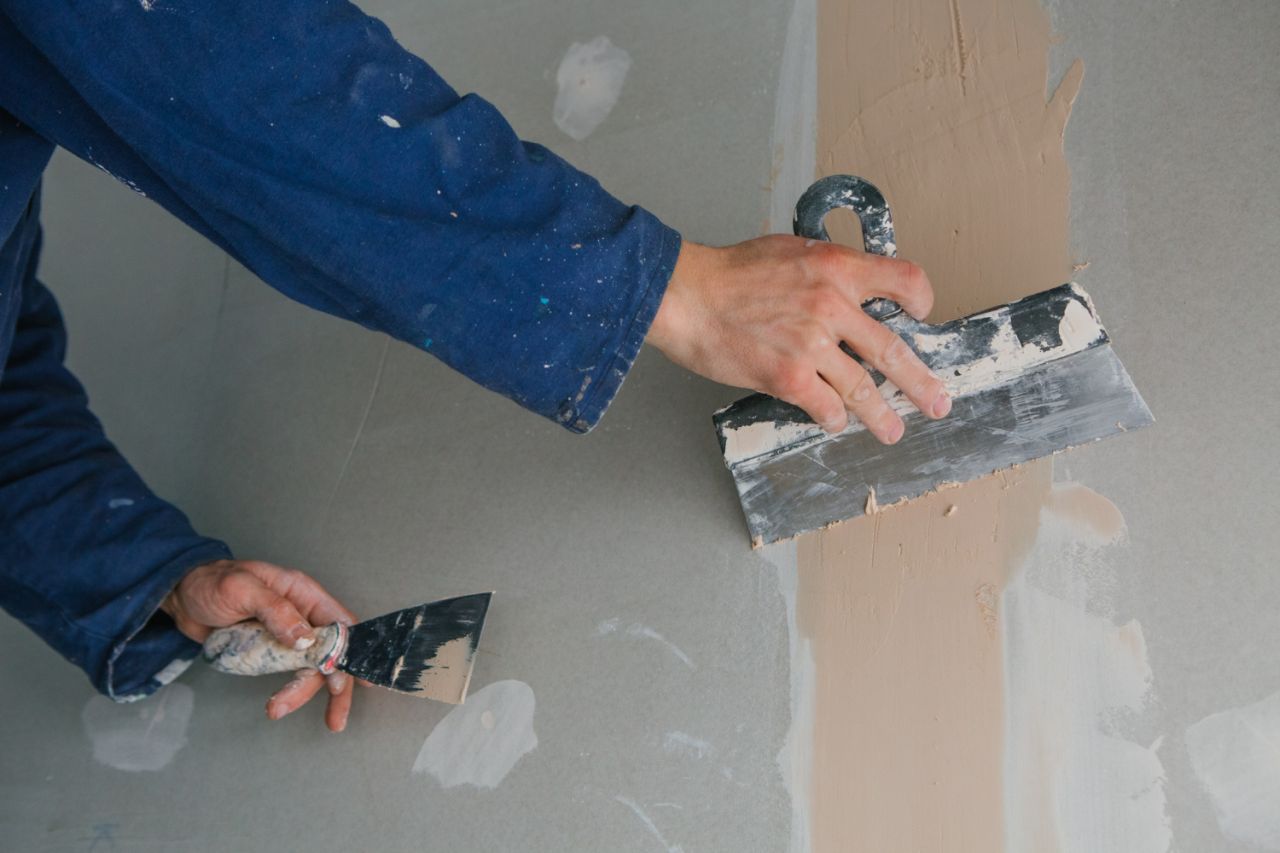
In addition to preventing the growth of mould, mildew, and algae, and discouraging the presence of insects, gypsum plasters are a natural antiseptic.
Construction costs may be reduced through the use of gypsum plasters because they reduce labour intensity. However, both gypsum plaster and cement plaster have drawbacks that make them less than ideal for use in high-rise and multi-family buildings.
Content Summary
- The use of gypsum plasters in India has completely altered the building business there.
- In recent years, they've gained popularity and now make up a significant portion of India's major construction material.
- Gypsum plasters are the go-to for multi-story structures including apartments, villas, townhomes, and commercial high-rises.
- Kanish Plasters has been serving the gypsum plastering industry for over ten years.
- Plaster of Paris is a form of gypsum plaster.
- Gypsum plaster has been used as a construction material for thousands of years, and it continues to be a popular option due to its adaptability, durability, and low maintenance.
- In addition to being resistant to fire and water, it is also a popular option in high-risk flood and fire zones.
- Furthermore, gypsum plaster is a green construction material because it is non-toxic and does not give out any dangerous gases or fumes.
- It's versatile enough to be applied in a wide range of finishes, from sleek and polished to rugged and textured.
- One issue is that, compared to other forms of plaster, it can be somewhat pricey.
- However, gypsum plaster isn't as sturdy as materials like cement or concrete, so it might not work for every building job.
- Plaster made from gypsum is used in construction all over the world and has been for millennia because of its versatility and resilience.
- It's a common material for contemporary construction because of its versatility, durability, and resistance to fire, water, and heat.
- The use of gypsum plasters helps keep building costs down.
- Our analysis and other studies show that using gypsum plasters can cut building costs by roughly 20%.
- Because of the larger surface area of plastering in high-rise buildings, this is likely to be more of an issue there.
- Given the recent over 20% increase in the cost of construction in India, this is also a significant consideration for construction firms and builders.
- Gypsum plasters are a vital factor at a time when builders are seeking ways to cut expenses.
- Thus, if you're a contractor working on apartment complexes or other high-rises who's having trouble keeping up with the escalating prices of construction, gypsum plasters are something you should definitely look into.
- Many businesses have made the switch to gypsum plasters and are now offering competitive pricing, so you may be missing out on business if you don't give it a try.
- Since apartments and other high-rise structures are frequently rented out by tenants for either residential or commercial usage, it is conceivable to offer competitive prices by switching to less expensive construction materials.
- Sometimes this happens after the development and construction of a building, when the space is sold off.
- Gypsum plaster reduces the weight of plastering by 35% While designing and constructing tall buildings and condominiums, civil engineers and architects have one overarching goal in mind: minimise the structure's weight.
- This is especially crucial in tall buildings, where extra weight reduces their resilience to natural disasters like hurricanes and earthquakes.
- Thus, gypsum plasters are prefered over cement plasters by construction companies and builders when constructing high-rise structures and flats.
- This strengthens their defences against earthquakes and other natural disasters.
- Gypsum plaster quickens the construction process The use of gypsum plasters helps speed up the building process.
- Based on our findings, gypsum plaster can cut down on building time by as much as 75%.
- This is due to the fact that, unlike cement plasters, gypsum plasters don't need water in order to cure.
- On the other hand, gypsum plasters harden to the point where they can be painted in just four days.
- Think of the time savings that would result from using gypsum plasters to finish apartment buildings and other high-rise structures.
- Gypsum plasters result in a smooth finish In either the home-selling or apartment-renting markets, kerb appeal and overall visual quality are crucial.
- Gypsum plasters result in a flawless, crack-free surface.
Frequently Asked Questions About Gypsum Plasters
Gypsum powder, water, and sometimes additives like sand, perlite, or vermiculite come together to form gypsum plaster. Plaster like this is frequently used in construction and remodelling jobs.
Gypsum plaster's many benefits include its resistance to cracking and shrinking, its light weight and ease of use, its ability to insulate against heat and sound, and its inherent resistance to fire. It's adaptable, too, as it can be worked into a wide range of surface treatments.
Plastering walls and ceilings with gypsum is typically done with a trowel or a spray gun. Priming a freshly cleaned surface is an essential first step. The plaster is then applied in stages, with drying time in between each coat.
Gypsum plaster can be applied to a wide range of wall materials, from brick to concrete to plasterboard to even wood. However, before applying the plaster, make sure the surface is clean, dry, and free of contaminants and debris.
Several variables affect how long it takes for gypsum plaster to dry, including the plaster's thickness, the room's temperature and humidity, and the type of plaster used. Drying time for gypsum plaster typically ranges from 24 hours to several days. Plaster needs to dry according to the manufacturer's instructions before any other finishes can be applied.
